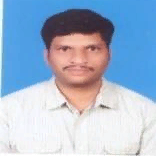
K. Srinivasa Reddy
Work place: Dept. of CSE, BVRIT Hyderabad College of Engineering for Women, Hyderabad, T.S., India.
E-mail: kondasreenu@gmail.com
Website:
Research Interests: Image Processing, Image Manipulation, Image Compression, Computational Science and Engineering
Biography
K.Srinivasa Reddy received Masters Degree in M.Tech. from SRM University, Chennai, T.N., India and pursuing Ph.D from JNTUA, Anantapuram, A.P., India, in Computer Science & Engineering. At present he is doing his research at Centre for Advanced Computational Research (CACR) of Anurag Group of Institutions (AGOI), Hyderabad, T.S, India. He is working as Associate Professor in BVRIT Hyderabad College of Engineering For Women, Hyderabad, T.S, India. His research interests include Image Processing, facial image and texture analysis. He has published research papers in various National, International conferences and Journals. He is a life member of ISTE, CSI.
Author Articles
Face Recognition Based on Texture Features using Local Ternary Patterns
By K. Srinivasa Reddy V.Vijaya Kumar B. Eswara Reddy
DOI: https://doi.org/10.5815/ijigsp.2015.10.05, Pub. Date: 8 Sep. 2015
Face recognition is one of the important and popular visual recognition problem due to its challenging nature and its diverse set of applications. That's why face recognition is attracted by many researchers. Methods based on Local Binary Pattern (LBP) are widely used for face recognition in the literature, and it is sensitive to noise. To address this present paper utilized the powerful local texture descriptor that is less sensitive to noise and more discriminant in uniform regions called as Local Ternary Pattern (LTP). The Uniform Local Binary Pattern (ULBP) derived on LBP treats a large set of LBP under one label called as miscellaneous. This may result some loss of information on LBP and LTP based methods. To address this two Prominent LBP (PLBP) are derived, namely PLBP-Low (L) and PLBP-High (H) on LTP. Based on this the present paper derived eight texture features on facial images. A distance function is used on proposed texture features for effective face recognition. To eliminate most of the effects of illumination changes that are present in human face an efficient preprocessing method is used that preserves the significant appearance details that are needed for face recognition. The present method is experimented on Yale, Indian and American Telephone and Telegraph Company (AT&T) Olivetti Research Laboratory (ORL) data bases and it has given state-of-the-art performance on the three popular datasets.
[...] Read more.Other Articles
Subscribe to receive issue release notifications and newsletters from MECS Press journals